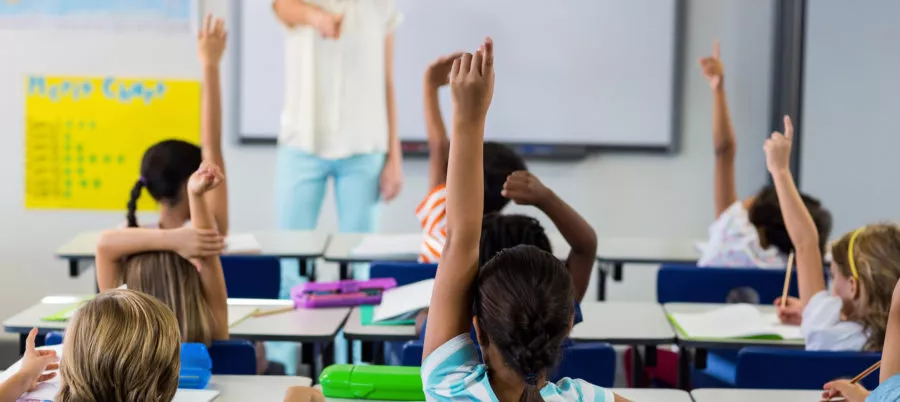Approximately 31% of Americans under the age of 30 turned out to vote in the 2018 midterm election on November 6, according to the Center for Information and Research on Civic Learning and Engagement (CIRCLE) at Tufts University. That by itself may not sound like a particularly impressive number (general voter turnout was around 49%), but it represents a huge increase over 2014 and the the highest participation since CIRCLE began analyzing the youth vote in midterm elections 25 years ago.
"[Youth voters] will play a significant role in shaping our country's future through their commitment to service and renewed interest in politics," John Della Volpe of the Kennedy School of Government at Harvard University said in response to the numbers.
If their level of political engagement continues to increase, Millennial voters could be delivering good news for public education in the years to come. A recent survey by the GenForward Project at the University of Chicago finds that Millennials (loosely defined as adults aged 18-34) overwhelmingly believe that increased school funding is "the most important way to improve public education in their local school district."
Investing more money in public education is the foundation of the #RedforEd movement that caught fire across the country in 2018. Many Millennial educators were leaders in the massive walkouts that called attention to cash-starved schools and the plight of teachers and other staff in their districts.
Founded by Dr. Cathy Cohen, Chair of the Department of Political Science at the University of Chicago, the GenForward Project draws on a nationally-representative survey of 1750 young adults to analyze their attitudes on a number of important issues.
According to "Millennials and Public Education in the United States," over 75% of respondents believe paying teachers more would do more to improve public schools than, for example, creating more charter schools.
And an overwhelming majority also believe that strong teacher’s unions mean a strong public education system.
 (Source: GenForward Project, "Millennials and Public Education in the United States")
(Source: GenForward Project, "Millennials and Public Education in the United States")
On the issue of school safety, Millennials by a wide margin prioritize expanding access to mental health resources over increasing the number of police officers in schools.
In addition, pluralities have a “very” or “somewhat” unfavorable opinion of Secretary of Education Betsy DeVos, even though a sizable percentage didn't have a position on her one way or the other.
The survey also reveals, however, that Millennials support school vouchers - more so than the general public, according to other polls.
Surprising? Not really, says Cohen. "Millennials are looking for and willing to support most initiatives they deem reasonable that are framed as improving public education," she explains.
 (Source: GenForward Project, "Millennials and Public Education in the United States")
(Source: GenForward Project, "Millennials and Public Education in the United States")
At the same time, this expressed support should be put in context, Cohen adds. While millennials may see vouchers as one policy option, they do not prioritize them as one of the most effective ways to improve public schools.
Furthermore, support drops among respondents if the program is not exclusively targeted toward low-income families. In some states where voucher programs exist - namely Indiana - they have been expanded to include more middle-class and affluent families.
"Only about 5% of people of color and 9% of whites in our survey picked increasing school choice through vouchers and charter schools as their first policy option," Cohen says. "Again, while young adults generally support a number of different policies they believe will improve education, increasing funding for public schools is their preferred policy option across race and ethnicity." (When given the choice between vouchers and more school funding, 71% of respondents opted for the latter.)
Disaggregating data along racial and ethnic groups is a feature of GenForward's surveys. Given that differences usually surface in responses, the uniformity in the results in this survey is striking, says Cohen.
"We usually uncover powerful differences tied to identities such as race and ethnicity. There are relatively few policy domains, such as education, where you find the consistency in policy positions among millennials across race and ethnic groups," she explains. "This level of agreement is unique and suggests strong and stable opinions on the issue of how to improve public education in the country."



